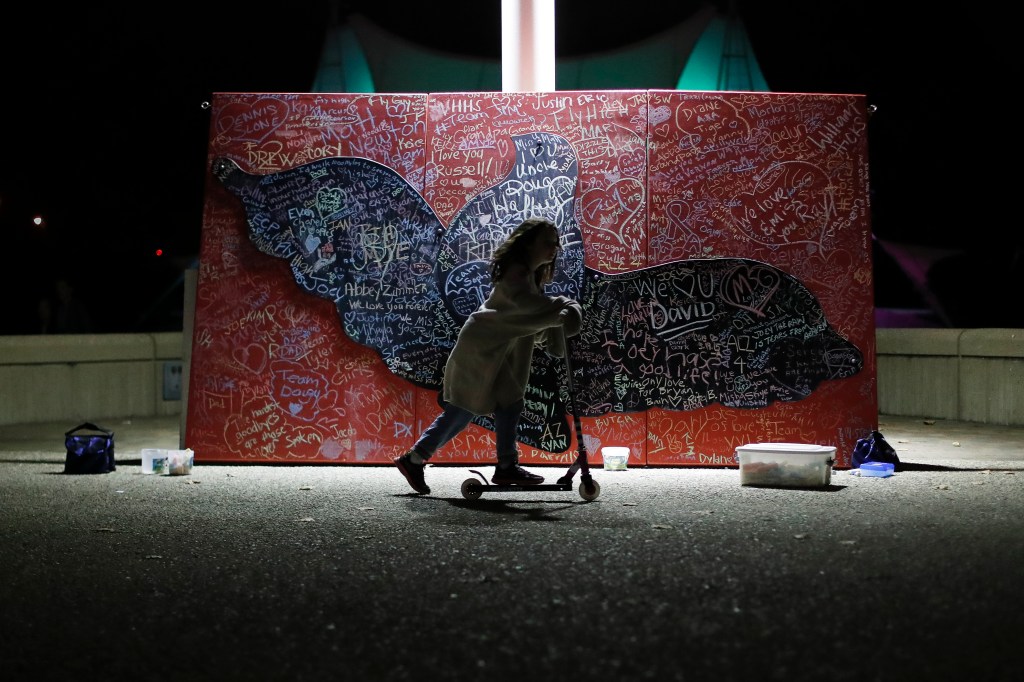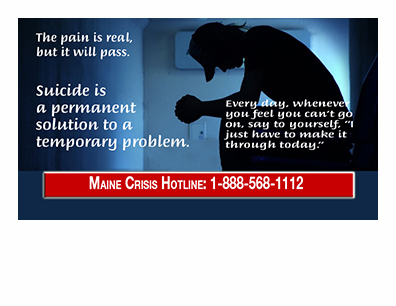There is an approximately one in 10 chance that you or someone you know will attempt to end their life. Over 45,000 Americans kill themselves every year — more than all the annual deaths from terrorism across the world combined. In fact, there are twice as many suicides every year as there are homicides. And more than 500,000 people are treated in U.S. emergency rooms each year for injuries related to self-harm.
Yet we rarely talk about suicide. Why? Because there is a strong sense of shame, guilt and stigma associated with mental health challenges and suicide. People are afraid to initiate conversations, as if talking about it will increase the incidence of suicide. Nothing can be further from truth.
And our silence clearly isn’t helping. The rates of most other causes of death are decreasing, but the suicide rate is increasing; a recent report from the Centers of Disease Control (CDC) shows that the rate of suicide has risen more than 25 percent over the last two decades.
Suicide has many faces, as the recent deaths of chef/world traveler Anthony Bourdain and fashion designer Kate Spade illustrate. It cuts across all socioeconomic, educational, racial and ethnic divides of our society. Our youth are especially vulnerable: Suicide is the second leading cause of death among the individuals between the ages of 10 and 34.
The current rate of suicide is shockingly high by any historical and social standard. It is simply unacceptable to let so many people die in the prime of their lives. Apart from the catastrophic effect suicide has on relationships, family and friends, the economic impact of suicide is staggering. It is estimated that a single suicide costs $1.3 million to the society. The total societal cost of suicide and self-harm behaviors is close to $93 billion every year.
Why isn’t more being done to prevent suicides? Suicide prevention should be part of every school curriculum and a top priority for every federal and state health care jurisdiction. Even though suicide is one of the leading causes of preventable deaths, there is virtually no attention being paid to it in the federal government. In fact, the Trump administration’s decision to roll back Obamacare has eroded health care protection for those most in need and may very well contribute indirectly to more suicides.
Anthony Bourdain’s suicide has stunned the culinary and entertainment world. Some celebrities, prompted by Bourdain’s suicide, shared stories of their own battles with depression. Patton Oswalt tweeted, “I’ve brushed up against this darkness and I know it’s a tempting exit but REACH OUT to ANYONE. He tweeted, “Stay on this side of it — in the light and warmth. Where you get to try again, every day.”
The single most important suicide prevention measure is gun control. Sixty percent of completed suicides involve the use of firearms. Just having a gun in the house significantly increases the risk of suicide for the whole family. Tens of thousands are allowed to die needlessly every year because of the inaction by Congress on gun control. Frankly, this is pathetic.
The opponents of gun control may say that the individuals likely to kill themselves will substitute guns with another lethal method. This is simply not true for many. Australia used to have a similar problem with gun violence; after it instituted sensible gun control laws in 1996, suicide rates have plummeted and remain low.
Another factor contributing to the suicide epidemic is the massive increase in opiate addiction and the introduction of Fentanyl to the street market. The vast majority of individuals suffering from opioid addiction do not get any treatment beyond a few days of detox after which they are released back to the street without any help.
Designer Kate Spade, who struggled with depression and alcoholism later in life, fixated on comedian Robin Williams suicide by hanging and that may have served as her inspiration, her sister said.
The irony is that although suicide is one of the most important health care crises in the 21st century, the victims of suicide and their families have little or no political voice. We cannot afford to wait. There are many common sense measures we can adopt, such as removing firearms from our homes, talking to our kids and our neighbors’ kids about suicide, monitoring signs of distress and mental illness in our family and friends, and attempting to get them appropriate treatment if needed. However, a comprehensive solution can only be found by engaging in an informed national dialogue about suicide, mental health and drug addiction.
I call upon President Trump to urgently appoint a federal suicide prevention task force and Congress to undertake common sense gun control laws. It is not enough to do a photo op when a tragedy strikes and pay lip service to the victims of suicide and drug overdose on the campaign trail. We must put our money where our mouth is. The American public and our conscience demand action. One more life lost to suicide is one too many.
Dr. Mansoor Malik is president of the Washington Psychiatric Society, a district branch of the American Psychiatric Association, and an associate professor at Howard University Hospital, where he directs the psychiatric residency program within the department of psychiatry and behavioral sciences. He wrote this for The Baltimore Sun.
———
©2018 The Baltimore Sun
Visit The Baltimore Sun at www.baltimoresun.com
Distributed by Tribune Content Agency, LLC.
Send questions/comments to the editors.




Success. Please wait for the page to reload. If the page does not reload within 5 seconds, please refresh the page.
Enter your email and password to access comments.
Hi, to comment on stories you must . This profile is in addition to your subscription and website login.
Already have a commenting profile? .
Invalid username/password.
Please check your email to confirm and complete your registration.
Only subscribers are eligible to post comments. Please subscribe or login first for digital access. Here’s why.
Use the form below to reset your password. When you've submitted your account email, we will send an email with a reset code.